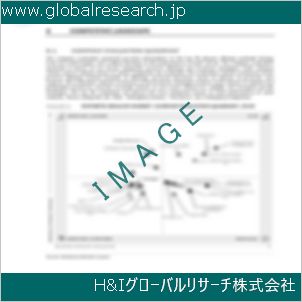Table of Contents
1 Industry Overview of Diisobutene
1.1 Definition and Specifications of Diisobutene
1.1.1 Definition of Diisobutene
1.1.2 Specifications of Diisobutene
1.2 Classification of Diisobutene
1.3 Applications of Diisobutene
1.3.1 Nuclear Application
1.3.2 Non-Nuclear Application
1.4 Industry Chain Structure of Diisobutene
1.5 Industry Overview and Major Regions Status of Diisobutene
1.5.1 Industry Overview of Diisobutene
1.5.2 Global Major Regions Status of Diisobutene
1.6 Industry Policy Analysis of Diisobutene
1.7 Industry News Analysis of Diisobutene
2 Manufacturing Cost Structure Analysis of Diisobutene
2.1 Raw Material Suppliers and Price Analysis of Diisobutene
2.2 Equipment Suppliers and Price Analysis of Diisobutene
2.3 Labor Cost Analysis of Diisobutene
2.4 Other Costs Analysis of Diisobutene
2.5 Manufacturing Cost Structure Analysis of Diisobutene
2.6 Manufacturing Process Analysis of Diisobutene
3 Technical Data and Manufacturing Plants Analysis of Diisobutene
3.1 Capacity and Commercial Production Date of Global Diisobutene Major Manufacturers in 2023
3.2 Manufacturing Plants Distribution of Global Diisobutene Major Manufacturers in 2023
3.3 R&D Status and Technology Source of Global Diisobutene Major Manufacturers in 2023
3.4 Raw Materials Sources Analysis of Global Diisobutene Major Manufacturers in 2023
4 Capacity, Production and Revenue Analysis of Diisobutene by Regions, Types and Manufacturers
4.1 Global Capacity, Production and Revenue of Diisobutene by Regions 2019-2024
4.2 Global and Major Regions Capacity, Production, Revenue and Growth Rate of Diisobutene 2019-2024
4.3 Global Capacity, Production and Revenue of Diisobutene by Types 2019-2024
4.4 Global Capacity, Production and Revenue of Diisobutene by Manufacturers 2019-2024
5 Price, Cost, Gross and Gross Margin Analysis of Diisobutene by Regions, Types and Manufacturers
5.1 Price, Cost, Gross and Gross Margin Analysis of Diisobutene by Regions 2019-2024
5.2 Price, Cost, Gross and Gross Margin Analysis of Diisobutene by Types 2019-2024
5.3 Price, Cost, Gross and Gross Margin Analysis of Diisobutene by Manufacturers 2019-2024
6 Consumption Volume, Consumption Value and Sale Price Analysis of Diisobutene by Regions, Types and Applications
6.1 Global Consumption Volume and Consumption Value of Diisobutene by Regions 2019-2024
6.2 Global and Major Regions Consumption Volume, Consumption Value and Growth Rate of Diisobutene 2019-2024
6.3 Global Consumption Volume and Consumption Value of Diisobutene by Types 2019-2024
6.4 Global Consumption Volume and Consumption Value of Diisobutene by Applications 2019-2024
6.5 Sale Price of Diisobutene by Regions 2019-2024
6.6 Sale Price of Diisobutene by Types 2019-2024
6.7 Sale Price of Diisobutene by Applications 2019-2024
6.8 Market Share Analysis of Diisobutene by Different Sale Price Levels
7 Supply, Import, Export and Consumption Analysis of Diisobutene
7.1 Supply, Consumption and Gap of Diisobutene 2019-2024
7.2 Global Capacity, Production, Price, Cost, Revenue, Supply, Import, Export and Consumption of Diisobutene 2019-2024
7.3 USA Capacity, Production, Price, Cost, Revenue, Supply, Import, Export and Consumption of Diisobutene 2019-2024
7.4 EU Capacity, Production, Price, Cost, Revenue, Supply, Import, Export and Consumption of Diisobutene 2019-2024
7.5 China Capacity, Production, Price, Cost, Revenue, Supply, Import, Export and Consumption of Diisobutene 2019-2024
7.6 Japan Capacity, Production, Price, Cost, Revenue, Supply, Import, Export and Consumption of Diisobutene 2019-2024
8 Major Manufacturers Analysis of Diisobutene
8.1 Manufacturer One
8.1.1 Company Profile
8.1.2 Product Picture and Specifications
8.1.2.1 Type I
8.1.2.2 Type II
8.1.2.3 Type III
8.1.3 Capacity, Production, Price, Cost, Gross and Revenue
8.1.4 Contact Information
8.2 Manufacturer Two
8.2.1 Company Profile
8.2.2 Product Picture and Specifications
8.2.2.1 Type I
8.2.2.2 Type II
8.2.2.3 Type III
8.2.3 Capacity, Production, Price, Cost, Gross and Revenue
8.2.4 Contact Information
8.3 Manufacturer Three
8.3.1 Company Profile
8.3.2 Product Picture and Specifications
8.3.2.1 Type I
8.3.2.2 Type II
8.3.2.3 Type III
8.3.3 Capacity, Production, Price, Cost, Gross and Revenue
8.3.4 Contact Information
8.4 Manufacturer Four
8.4.1 Company Profile
8.4.2 Product Picture and Specifications
8.4.2.1 Type I
8.4.2.2 Type II
8.4.2.3 Type III
8.4.3 Capacity, Production, Price, Cost, Gross and Revenue
8.4.4 Contact Information
8.5 Manufacturer Five
8.5.1 Company Profile
8.5.2 Product Picture and Specifications
8.5.2.1 Type I
8.5.2.2 Type II
8.5.2.3 Type III
8.5.3 Capacity, Production, Price, Cost, Gross and Revenue
8.5.4 Contact Information
…
9 Marketing Trader or Distributor Analysis of Diisobutene
9.1 Marketing Channels Status of Diisobutene
9.2 Traders or Distributors with Contact Information of Diisobutene by Regions
9.3 Ex-work Price, Channel Price and End Buyer Price Analysis of Diisobutene
9.4 Regional Import, Export and Trade Analysis of Diisobutene
10 Industry Chain Analysis of Diisobutene
10.1 Upstream Major Raw Materials Suppliers Analysis of Diisobutene
10.1.1 Major Raw Materials Suppliers with Contact Information Analysis of Diisobutene
10.1.2 Major Raw Materials Suppliers with Supply Volume Analysis of Diisobutene by Regions
10.2 Upstream Major Equipment Suppliers Analysis of Diisobutene
10.2.1 Major Equipment Suppliers with Contact Information Analysis of Diisobutene
10.2.2 Major Equipment Suppliers with Product Pictures Analysis of Diisobutene by Regions
10.3 Downstream Major Consumers Analysis of Diisobutene
10.3.1 Major Consumers with Contact Information Analysis of Diisobutene
10.3.2 Major Consumers with Consumption Volume Analysis of Diisobutene by Regions
10.4 Supply Chain Relationship Analysis of Diisobutene
11 Development Trend of Analysis of Diisobutene
11.1 Capacity, Production and Revenue Forecast of Diisobutene by Regions and Types
11.1.1 Global Capacity, Production and Revenue of Diisobutene by Regions 2024-2029
11.1.2 Global and Major Regions Capacity, Production, Revenue and Growth Rate of Diisobutene 2024-2029
11.1.3 Global Capacity, Production and Revenue of Diisobutene by Types 2024-2029
11.2 Consumption Volume and Consumption Value Forecast of Diisobutene by Regions, Types and Applications
11.2.1 Global Consumption Volume and Consumption Value of Diisobutene by Regions 2024-2029
11.2.2 Global and Major Regions Consumption Volume, Consumption Value and Growth Rate of Diisobutene 2024-2029
11.2.3 Global Consumption Volume and Consumption Value of Diisobutene by Types 2024-2029
11.2.4 Global Consumption Volume and Consumption Value of Diisobutene by Applications 2024-2029
11.3 Supply, Import, Export and Consumption Forecast of Diisobutene
11.3.1 Supply, Consumption and Gap of Diisobutene 2024-2029
11.3.2 Global Capacity, Production, Price, Cost, Revenue, Supply, Import, Export and Consumption of Diisobutene 2024-2029
11.3.3 USA Capacity, Production, Price, Cost, Revenue, Supply, Import, Export and Consumption of Diisobutene 2024-2029
11.3.4 EU Capacity, Production, Price, Cost, Revenue, Supply, Import, Export and Consumption of Diisobutene 2024-2029
11.3.5 China Capacity, Production, Price, Cost, Revenue, Supply, Import, Export and Consumption of Diisobutene 2024-2029
11.3.6 Japan Capacity, Production, Price, Cost, Revenue, Supply, Import, Export and Consumption of Diisobutene 2024-2029
12 New Project Investment Feasibility Analysis of Diisobutene
12.1 New Project SWOT Analysis of Diisobutene
12.2 New Project Investment Feasibility Analysis of Diisobutene
13 Conclusion of the Global Diisobutene (CAS 25167-70-8) Industry 2024 Market Research Report
| ※参考情報 ジイソブテン(Diisobutene)は、化学式が C8H16 の有機化合物であり、主に化学工業で重要な役割を果たすブチレン類の一種です。CAS番号は 25167-70-8 で、一般的には2つの異性体が存在します。ジイソブテンは、主に高分子化合物の製造や添加剤としての用途があり、現代の化学工業において不可欠な材料とされています。 ジイソブテンの特徴として、比較的低い沸点(約 80℃)と高い揮発性が挙げられます。無色で刺激的な匂いがあり、室温においては気体または液体の形で存在します。この化合物の構造は、炭素原子が等間隔に配置された直鎖または分枝構造を持ち、非常に反応性が高いことから、他の化合物との化学反応が容易に進行します。 ジイソブテンには主に二つの異性体が存在し、それぞれが異なる物理的性質や化学的性質を持っています。これらの異性体は、直鎖および分岐の炭素骨格から成り、特定の用途や反応に適した性能を提供します。このため、ジイソブテンは非常に多様な用途を持つことができます。 用途としては、ジイソブテンはポリマー合成の中間体として用いられます。特に、スチレン系やエチレン系の高分子の製造において重要な役割を果たします。ジイソブテンを基にしたポリマーは、高い耐久性や弾性を持ち、自動車部品や建材、包装材料などの製造に利用されています。 また、ジイソブテンは加硫剤や界面活性剤の前駆体としても利用されることがあります。これにより、プラスチックやゴムの加工性能を向上させることができるのです。このような特性から、ジイソブテンはさまざまな工業用途に展開され、高度な機械的特性を持つ製品を生み出す重要な化合物となっています。 ジイソブテンに関連する技術としては、主にポリマー化技術が挙げられます。ジイソブテンやその反応生成物を用いたポリマーの合成は、様々な化学反応によって可能になります。これには、重合、付加反応、脱水反応などが含まれ、新たな材料を開発する手法として広く応用されています。 ジイソブテンはその特性から、環境への配慮も必要とされており、持続可能な製造プロセスやリサイクル技術の開発が進められています。化学工業は環境問題への対応が求められる中で、ジイソブテンを用いた製品や製造プロセスのグリーン化に向けた取り組みが行われています。 最後に、ジイソブテンはその多様な用途と特性により、化学産業において持続可能な未来を築くための核となる物質の一つであるといえます。これにより、社会の経済的発展を支えつつ、環境に優しい技術を活用した産業の発展を促進する可能性が期待されています。ジイソブテンの研究開発は今後も進むと予想され、その応用範囲はますます広がることでしょう。 |
❖ 免責事項 ❖
http://www.globalresearch.jp/disclaimer












